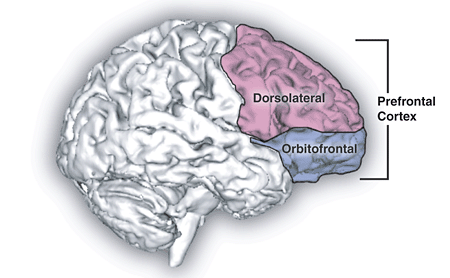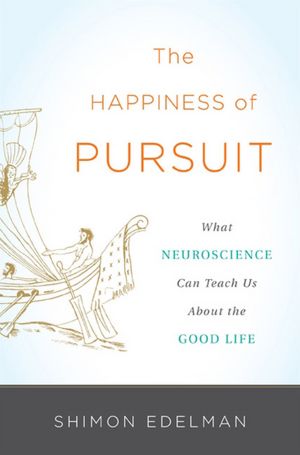The gap between atheists and the religious seems at times to be an
impossible divide, almost as if believers and non-believers come from
different species. What separates the secular from the sacred? An
"Ask the Brains" question on the
Scientific American
site recently inquired as to any differences between the brain of an
atheist and the brain of a religious person. Andrew Newberg, the
director of research at the Myrna Brind Center of Integrative Medicine
at Thomas Jefferson University and Hospital in Philadelphia, responded
that, yes, in fact, there are some small but perceptible differences
between the brains of believers and non-believers. Newberg is a pioneer
in the field of "neurotheology," the study of
how the brain approaches faith.
For
example, the frontal lobe of the brain governs reward, attention, and
motivation. In past studies, those who meditate or pray regularly seem
to have more active frontal lobes on average than those who do not.
Meditation has even been shown to
grow the frontal lobe. Newberg's own research has measured
changes in cerebral blood flow among Franciscan nuns as they prayed in a meditative fashion, finding an significant increase in activity in the frontal lobe as well.
The hippocampus is the center of memory and navigation in the brain;
recent research from Duke University
shows that people who have had a "born-again" experience showed more
atrophy of the hippocampus on average than the religious who didn't
identify as born-again. Research also suggests that the religious brain
has higher levels of dopamine (the hormone associated with motivation,
reward, and dozens of other processes) than the non-religious brain. But
does the belief cause the brain changes, or does the brain initiate the
impulse to believe?
The human tendency to believe in the
supernatural may have its roots in the development of language, or in
our capacity to assign minds and actions to others, known as
the theory of mind.
How it evolved is up for debate, but the ritual burial practices of our
Paleolithic ancestors imply that it has been around as long as humanity
itself, becoming
increasingly more complex with time.
The stunning cave art found in Lascaux or Chauvet seems to have served
some sort of ritual purpose as well. As humanity stabilized into
sedentary populations after the neolithic revolution, organized religion
began to take over in small pockets of civilization, spreading as the
associated cultures began to increase in influence and power. The
stunning megaliths at
Göbekli Tepe,
the 12,000 year-old structure on a hilltop in Turkey, may even suggest
that the religious impulse was instrumental in the development of human
society.
But the effects of religion may also pertain to the present day. A recent study finds that the religious
tend to have higher self-esteem and are better adjusted
psychologically than the non-religious. The catch? This finding only
held true in countries that put a high value on religion. Perhaps for
these people, the value in religion is not in having faith itself, but
in the social capital that comes with it in a pious society. This
finding is reinforced by
research done with senior women
with and without a faith-based support network. But is religion just an
old-fashioned social network in a world full of new social
opportunities? After all, about 15 percent of Americans identify as
having
no religious affiliation, and the number seems to be growing.
All of which leads us to an interesting point, in terms of the future of humanity. As Kiwi researcher James Flynn discovered,
humanity’s IQ is increasing rather dramatically. This is probably due to increased nutrition, better early education, and a much more stimulating environment.
Research also suggests that the progression will slow and finally stop as it reaches its higher end—
Homo sapiens
can only get so smart. But this intelligence maximum would still
represent most of humanity possessing an IQ on something of the order of
(measured in today’s numbers) 140. In other words, someday we may be
living on a planet of geniuses, assuming that we are able to provide
enough food, medicine, and education.
We also know that as IQs rise, there tends to be
a corresponding rise in atheism.
It seems that the smarter a person is, the less likely he or she is to
believe in a god. Does this mean that humanity is destined to shed the
belief in a higher power like some sort of vestigial tail? Will we
become a planet of brilliant secular humanists? Nobody knows, of course,
but it is interesting to note that there are some countervailing forces
at work.
Spiritual beliefs may not only help individuals
survive, but there is evidence that religion plays a strong role in
group survival as well. In a study of several hundred historical
American intentional communities, University of Connecticut
anthropologist Richard Sosis found that secular groups were four times
more likely to disappear per year than groups founded on religious
principles. And in a further study that focused on just the religious
groups, Sosis found a direct correlation between the number of religious
rules placed on members and the longevity of the group as a whole. The
stricter the rules, the longer the community lasted. Strictures that
were placed on members of secular communities held no such power. “
Dr Sosis therefore concludes
that ritual constraints are not by themselves enough to sustain
co-operation in a community—what is needed in addition is a belief that
those constraints are sanctified.”
Might future atheist cultures
be less fit than the religious societies next door? Or is there a form
of belief or spiritual practice that is suitable for atheists? As
Professor Newberg noted in his answer cited above, we can reap many of
the benefits of the spiritual brain with
mindfulness meditation,
a practice suited for even the most ardent atheist. Or perhaps
mythology will give way to elegant metaphysics, creating a sort of
Religion 2.0, wherein authority comes from reason and philosophy instead
of the supposed revelations of a divine being. Duke University
philosopher Owen Flanagan recently published an article titled
"Buddhism Without the Hocus-Pocus,"
proposing that religious Buddhism dispense with all supernaturalism
(such as the concepts of karma and reincarnation), and inscribe the
ethical and epistemological aspects of the faith onto a naturalistic,
non-theistic background.
Throughout human history religion has
helped us to understand our world and to form effective groups based on a
shared ideology. Though Western society is becoming increasingly more
secular, the power of a shared faith to mobilize groups is obvious from
Palestine to Tibet. We may not necessarily be hardwired for mystical
experiences, but we are hardwired to benefit from a robust belief system
shared by our peers and a contemplative spiritual practice, even if not
necessarily a theistic one. Where we're headed is unlikely to be
completely sacred, but it's probably not going to be entirely profane,
either.
One option to consider:
David Eagleman’s Possibilianism.




 Q: Why did you write the book?
Q: Why did you write the book?










